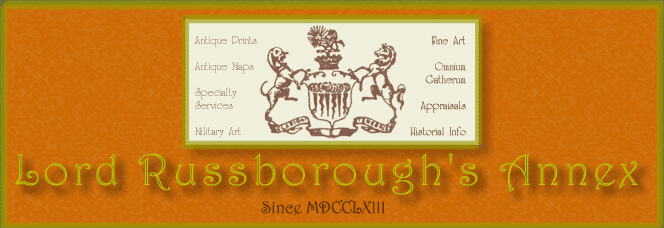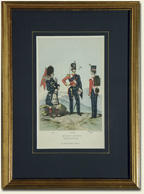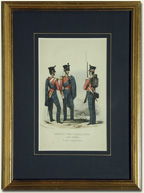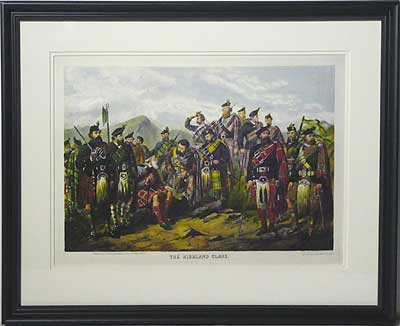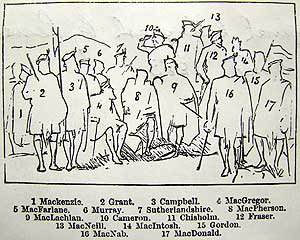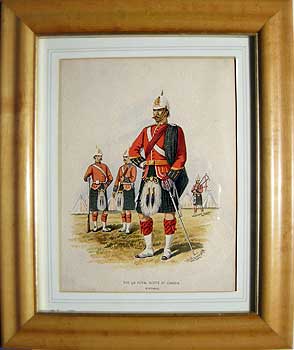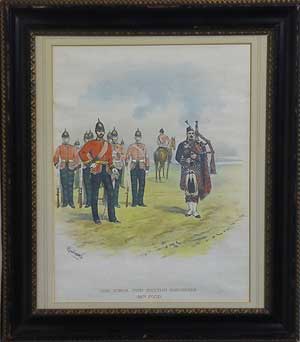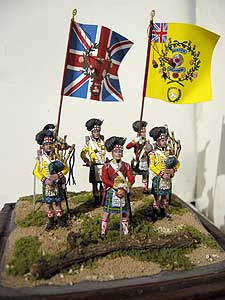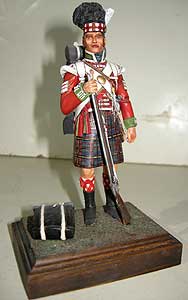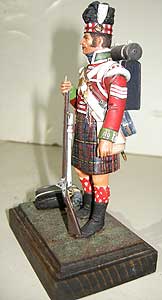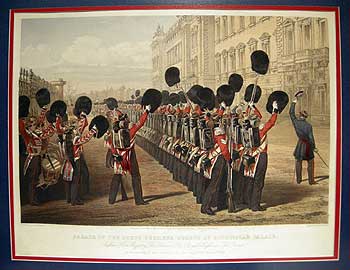
Walker E. after Thomas G.H. Parade of the Scots Fusileer [sic] Guards at Buckingham Palace (before her Majesty the Queen and His Royal Highness the Prince), on the morning of their departure for the seat of war March 2nd. 1854
Colour Aquatint, double matted, glazed, cherry wood frame SIZE 15 1/4 x 19 inc letters (38.7x 48.3 cm.) 23 x 27"
Ref. RY7 (179)/ALN/r.ando> LNN PRICE CODE C
Decorative and hard to find view of the parade of the Scots Fusilier Guards, prior to their departure for the Crimean War.
First established in 1805, the Scots Fusilier Guards were deployed in the Napoleonic Wars and later in the Crimean War.
In 1854, the Crimean War began, which pitted the United Kingdom, France and the Ottoman Empire against the Russian Empire. The 1st Battalion of the Scots Guards Fusiliers were dispatched as part of the Guards Brigade to the East, being deployed to Malta, Bulgaria and Turkey, before, in September, the British finally landed in the Crimea, at a place called Calamity Bay.
The British and their French allies then began the advance on Sevastopol, a Russian naval base, but was blocked at the River Alma by Russian forces. And here came the Battalion's first engagement at the Battle of Alma, an action that saw chaotic and heavy hand-to-hand combat between the British and Russians. The road to Sevastopol runs through a gap between two hills, one to the east, known as Kourgane Hill and the other to the west, known as Telegraph Hill. On Kourgane Hill there consisted two earthworks, one known as the 'Great Redoubt' on the western side of the hill, while the other was on the eastern side, known as the 'Lesser Redoubt'.

